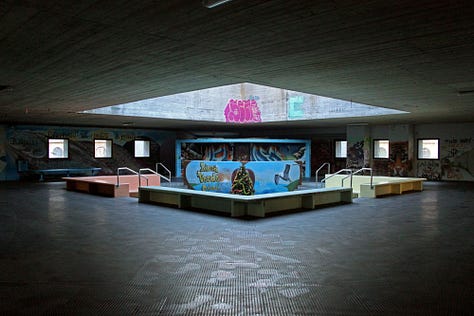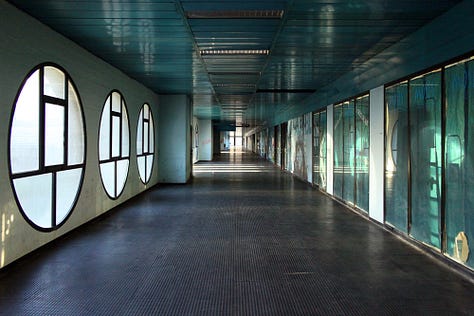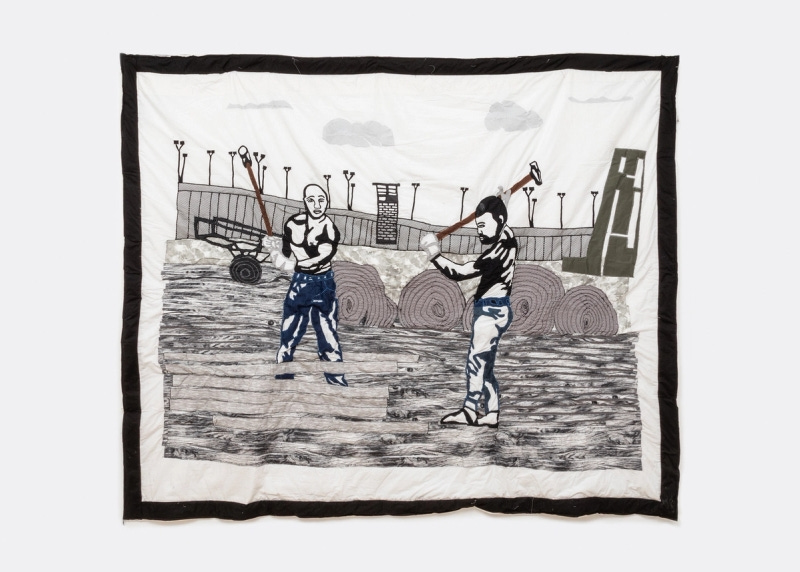Welcome to La Miccia! This newsletter is too long to fit in your inbox. Head over to the website or click on “view in browser” to catch the full version. Thanks for reading!
In today’s letter:
My experience on TikTok
Art & Culture Publications Masterlist
This week’s news including censorship, inaugurations, and the Moon
Are you an expert in Brutalism? If yes, I’d love to talk
Today, Sunday January 19th, 2025, TikTok is officially banned in the US. You already knew that. What you might not know is that I once was a TikTok art history micro-influencer-person. I started posting on the app during the pandemic and stuck with it more or less consistently since May of last year, when I had some sort of quarter life crisis and decided to retreat from the public eye (except there was no public eye for me to retreat from unless you count my mom and dad and the other maybe ten people who regularly kept up with my posts).
While I got fatigued and frustrated with the platform and stopped posting, I quietly promised myself that if TikTok didn’t get banned, I’d go back. Well, that didn’t happen, so I’ll stick to seeking my validation from online strangers on here for the foreseeable future.
Oh, how did that button get here?
I had a great time on the app overall. I angered many a man with my videos on Picasso, cultural appropriation, and separating the art from the artist. I learned that people will get mad about anything, but also that they will come together to support you against a 50yr old bully who thinks you should die because of the moles on your face. I met a ton of cool creatives who also made content about art history. I got to work with fun brands and amplify the voices of people whose message I believed in.

Most importantly, I put myself out there in ways I didn’t think I was capable of. Having an online presence was challenging and liberating in many ways, and it encouraged me to continue working and reflecting on how I learn, think, and talk about art. I got to be creative. It was a corner on the internet for me, where I could talk about Bob Ross and intersectionality and archeological excavations and whatever the hell I wanted.


I don’t know that I’ll move to whatever the next TikTok ends up being. I had a fun time and built a wonderful following just short of 40k people, and that might be enough for now.
Last week, I shared with you a list of art and culture publications accepting pitches/submissions. I’ve added to it since, but I am always looking for more suggestions.
With TikTok’s ban, people in the US are moving to Chinese app Xiaohongshu, where the predominantly Chinese user base is welcoming them with open arms. This is an unprecedented digital phenomenon. Some are calling US users “refugees”, codifying this as a digital migration. This characterization isn’t inaccurate. Major social media platforms (Instagram, Facebook, Twitter), were initially populated more or less homogeneously, geographically speaking. This time we’re seeing a largely US-based group of people moving to an already established platform with its own memes, trends, and site-specific pop culture references. As the political spectrum shifts further right and censorship grows more pervasive, I wonder if this is just the first of many instances of digital migration. Is this the beginning of more widespread online cross-border phenomena?
Speaking of censorship, PEN America ran a survey of art museum directors, asking what the most common types of censorships they have to deal with are. The results reveal broad agreement among respondents on several scenarios. Most agreed that removing artwork due to the artist’s race, ethnicity (82%), sexuality, or gender identity (80%) constitutes censorship. High agreement also appeared for removals based on the artist's political stance (79%) or works deemed "too political" (72%). Regarding pressure sources, 41% were concerned about Republican officials, compared to 3% for Democrats. Artworks likely to receive the most complaints included those that criticize Christianity (30%), that are critical of President Trump (28%), and that are critical of law enforcement (21%).
State-mandated censorship efforts targeting art, literature, and education are rising. With them, bills protecting museums' rights to exhibit sexually explicit material or nudity to minors for educational purposes, could be revoked. If these bills pass and these laws are implemented, they could impact even something as ordinary as an ancient Greek statue or a Renaissance painting.“Though none has become law, the formal introduction of these bills represents a threat to artistic freedom, the freedom of the public, and the museum sector” PEN writes. This survey is coming out at the right time. Just last week Sally Man’s photographs were removed from a museum in Texas, and remember when I talked about a museum that was making people sign waivers?
Have you seen Instagram’s new feed layout? After spending years curating a square photo vibe this feels like the ultimate betrayal, and Zuck gave me one more reason to call him a loser. The new layout is to push reels, right? It’s the same format as the reels page and Meta’s not so sly suggestion that they will continue prioritising videos over pictures.
Museums and cultural institutions in LA launched a $12M emergency fund for artists hit by the fires. You can find the list of participating institutions and individuals here.
The Moon is a threatened site, according to the World Monuments Fund. This marks the first time an extraterrestrial site has been included on the list. While I think that in the future the Moon will make the list due to overpopulation and pollution, the WMF is currently focused on the preservation of artefact remains from space missions.
The landing site, known as Tranquility Base, preserves some 106 assorted artifacts related to the event, including the landing module, scientific instruments, biological artifacts, and commemorative objects, as well as Neil Armstrong’s iconic boot print.
A female-centric society has been found for the first time in European prehistory.
Every year we circle back to the debate: “is Brutalist architecture ugly?”. This year, the release of The Brutalist with Adrien Brody reignited the discussion. I have tickets to see it on Tuesday and will report back. I love brutalist architecture. When it emerged in the 20th century, it was used for public housing, government buildings, and educational institutions, as Brutalist architects were driven by a sense of social responsibility - their aim was to address housing shortages and create functional, resilient buildings. As a movement, Brutalism prioritises collectivism over individualism. It is no coincidence, therefore, that Brutalism’s harshest critics are political conservatives like Prince Charles and Donald Trump. The latter banned its use in federal buildings during his first term with his draft Make Federal Buildings Beautiful Again. You can’t make this shit up.



The Melara architectural complex in Trieste, Italy is one of my favourite brutalist buildings Do you want to have dinner with Donal Trump and JD Vance at the National Gallery of Art? That’ll be $1M. According to the Trump Vance Inaugural Committee, donors would need to contribute at the highest tier to get access to dinners attended by Trump and Vance (and even then, many donors have been placed on a waitlist). The National Gallery of Art is a national museum supported by the US government. In the fiscal year 2024, it received $209M from congressional appropriations for salaries, maintenance, and exhibitions. The museum depends on private donations for acquisitions and educational programs. The Trump Vance inaugural committee is expected to raise nearly $200M - with so much money, the committee is overfunded and the extra cash will go to Trump’s future presidential library.
A bunch of Italian museums are offering dog-sitting services to boost visitor numbers. I’ve never had pets, but apparently a research by MarsPetcare and Tripadvisor showed that around one third of pet owners in the US changed their travel plans due to the difficulty of travelling with their pets, so this feels pretty huge.
Artwork of the week
Gary Tyler is a fiber artist who, at the age of 16, was sentenced to death for a crime he did not commit. He spent 42 years in Angola State Penitentiary in Louisiana before being released at the age of 57. Tyler taught himself how to quilt to support the Angola Prison Hospice program, where he was a volunteer. However, he started thinking of himself as an artist only after his release. “In prison, doing any kind of craft like that, we called ourselves hobby crafters. And I thought I was just doing hobby craft work—not knowing that this is artistic work that people do,” he says. “I didn’t start embracing the idea that I was an artist until a few years ago.”











